Unleashing Her Dreams
An Interview with I.T. Hammar
|
I.T. Hammar is a 17-year-old Norwegian artist whose vision and skill are way beyond her years. She's a prolific painter, overflowing with ideas for figurative and surrealist works. Learn how she got started and what makes her tick as she shares her perspective in this interview. — Editor |
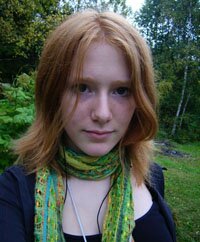
Diving into "Unleashing Her Dreams," the interview with I.T. Hammar about her artwork was a truly inspiring journey. The discussion not only illuminated her creative process but also unveiled the synergy between art and the uncharted territories of economics essay writing help.
In our conversation, I.T. Hammar shared her profound insights into how her dreams and experiences shape her artwork. The way she channels her thoughts onto canvas reflects the essence of artistic expression—an endeavor that, much like economics essay writing, involves translating complex ideas into a visual language that resonates with others.
I.T. Hammar's ability to harness her dreams and transform them into tangible creations parallels the skill of crafting an impactful economics essay. Just as she carefully selects each stroke of the brush to convey a specific emotion or idea, a skilled economics essay writer selects words meticulously to convey intricate economic theories or concepts effectively.
Where did you learn your art skills?
Did you attend art school?
I never went to any particular art school before I started the Art & Design Course in senior high school. I have always been learning on my own, with a little guidance I had from the arts and crafts teachers in school ever since I started. I have been depending on books and any other sources I could find.
Did you have a mentor?
I had no real mentors before last year when I got in touch with an American oil painter, who I have been corresponding with every time I have had a question about techniques, materials, and so on. When starting Art and Design last year, though, I got a teacher who really burned for her subjects, not even being educated as a teacher, but being a ceramicist. And she has taught me some of the most valuable information for my work so far, together with what I have learned from my teacher in America. So I also started attending her art course in my spare time to see if I could absorb some more knowledge from her whenever I could.
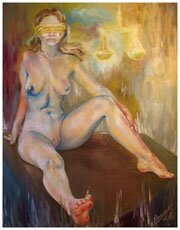 When did you first start drawing?
When did you first start drawing?
I guess the interest for drawing as art—and not just drawing for the sake of drawing—started somewhere in fourth grade, on the occasional times the whole class went to the library to borrow books. I found this wonderful corner with only art and hobby books that I completely fell in love with. I found a book called something like The Big Drawing Book. I started flipping pages looking for something I could imitate and learn from. I first went through pages of landscapes and animals that I did not find interesting. Then eventually on some of the last pages in the book, there were the figure drawings. I immediately knew I had found my thing. I started out just imitating them, then later drawing more freely.
Why do you find figures to be interesting subject matter?
Well, I have always found them interesting. It might be because of the shapes in the body, or simply that the body is such an important part of a human, and what we relate to bodies as well. I am not completely sure. But one thing is certain. I will always keep the human body as one of my favorite subjects, and continue to explore it.
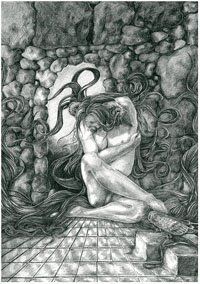 What constitutes a captivating pose?
What constitutes a captivating pose?
Anything can be a captivating pose to me, but I think often they are intricate, complicated, or in some way make themselves full of potential—something to work with. Things like particular curves that show muscles, folds, and overlapping make a pose interesting to work with, and eventually give me that sudden idea of something I want to make.
How do you develop ideas for a composition?
Many times I start out with pictures, a pose that appeals to me, whether it is from someone else or one I have modeled or shot myself. But once I have a pose that appeals to me, this is usually where the idea comes along, from what I see in the pose itself, what associations I have around it. It is always exciting to see what I end up with, and then try to interpret it myself.
What themes are you pursuing in your artwork?
Lately I am working with surrealistic and fantasy pieces, where I am trying to unleash my dreams and subconscious thoughts, and bring them to the surface. I work a lot with eggs as a subject that goes through my works, at least for now. I like to use them because they can be a symbol of several things concerning life, death, potential, etc.
 What sort of message do you wish to communicate through your art?
What sort of message do you wish to communicate through your art?
There is not necessarily a particular message I want to deliver to others in my paintings, because mostly they are messages to myself, as I can explore my own mind through them, and figure out the message as I look at the finished works. These are built through free associations, thoughts, current feelings, and so on, that together make an image possible for myself to explore.
What reaction from a viewer makes you happiest?
Actually, I enjoy a variety of reactions. Like for a surreal painting, I could very well both like to see the viewer burst out in laughter as well as see them really dig into the thoughts of the painting and tell me what they think is the story in the painting or feelings behind. I usually get from five to ten very different interpretations of a painting, but usually they all have something very true in them about why I actually did what I did, which always catches my interest.
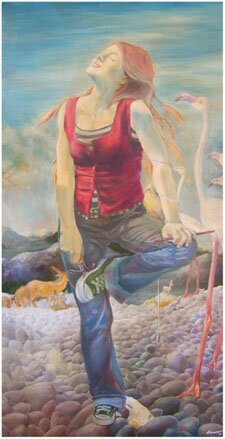 What do you think is the purpose of an artist?
What do you think is the purpose of an artist?
The artist's purpose is to come up with great ideas, while the craftsman's purpose is to make them complete though a process of technique. However, an artist that is a good craftsman, as I hope to be, is blessed indeed!
Who are your favorite artists?
Well, of course I am into the old masters, and many of them too, like Da Vinci, Rafaello, Escher, Magritte, Dali and more like them that have a very clean style with fine lines. But I also adore Munch, Monet and other artists that use far thicker lines and have a completely different style from what I mostly want to accomplish throughout my studies. At the moment I am aiming for a kind of veristic surrealism, that you can compare with Dali and Magritte, which is naturalistic objects and people, put into a strange associated combination. However, I try not to study other surrealists, as sooner or later that might bring me to copy them more than learning from them, as I already have a lot of ideas but need to work on how to execute them.
What is your favorite media?
I really love working in oil paint, as it gives so many opportunities for me. I like the way it takes time to dry, so that I have good time to mix colors and shades into it while working on a piece, and it is so flexible considering you can thicken it, thin it, make it dry faster, slower, and make it do whatever you want. For some reason there is also something wonderful about the smell of oil paints— it just sets the mood right.
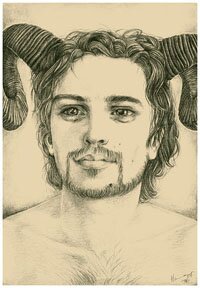 What is your favorite surface?
What is your favorite surface?
I usually take what I can get a hold of, even though I really love working on canvas. I just adore the texture of it!
How do you know when a piece is done?
In fact, I guess I never do. Sometimes I lose interest. Sometimes it simply screams “show me” and I know I have to finish it. I guess I could always work more on all my paintings, as I never really get satisfied, but I learn something more from each piece that will make the next better. And I just have so many ideas. If I would never finish a work, I would never get to start another one.
As an artist, what are some of your greatest challenges or obstacles you face when making your art?
Well, I am young, so I have not met many obstacles yet. To me the biggest problem is actually just where to put the pictures, as it is not always easy to find a new home for all of them.
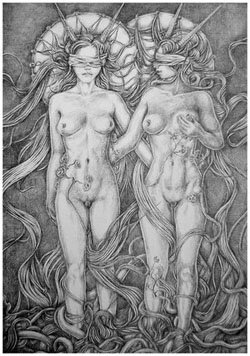 How has your work evolved over the years?
How has your work evolved over the years?
I think my work has evolved enormously since I started, and even every year I can really see the change. It is only these last years that I really feel it too. These past months I have developed a lot and simply realized that nothing is impossible. Of all I want to make, I can do it all! It is a very good feeling to have, to only have to worry about the ideas, and at the moment not even those, as they are overflowing me.
What advice would you give to an aspiring artist?
Simply to work hard and always look at what you can do better in order to thrive even more.
How can one acquire your work?
Contacting me, preferably on my email i.the.hammar![]() gmail.com.
gmail.com.
Do you accept commissions?
I do, but only to some extent as I need to have time for my school work.
Thank you very much for taking the time to talk with me about your art today.
|
Facts at a Glance
|
|
|
Artist:
|
I.T. Hammar |
|
Website:
|
http://www.ithammar.artworkfolio.com/ |
|
Location:
|
Norway |
|
Commissions Accepted?
|
Yes, on a limited basis. |
Artist-Perspectives.com Home Page
© Artist-Perspectives.com